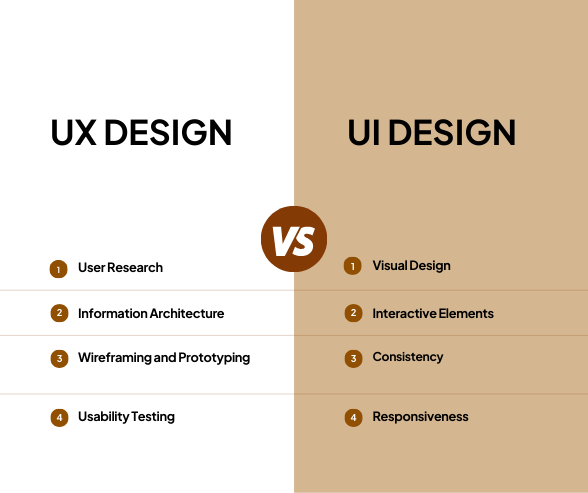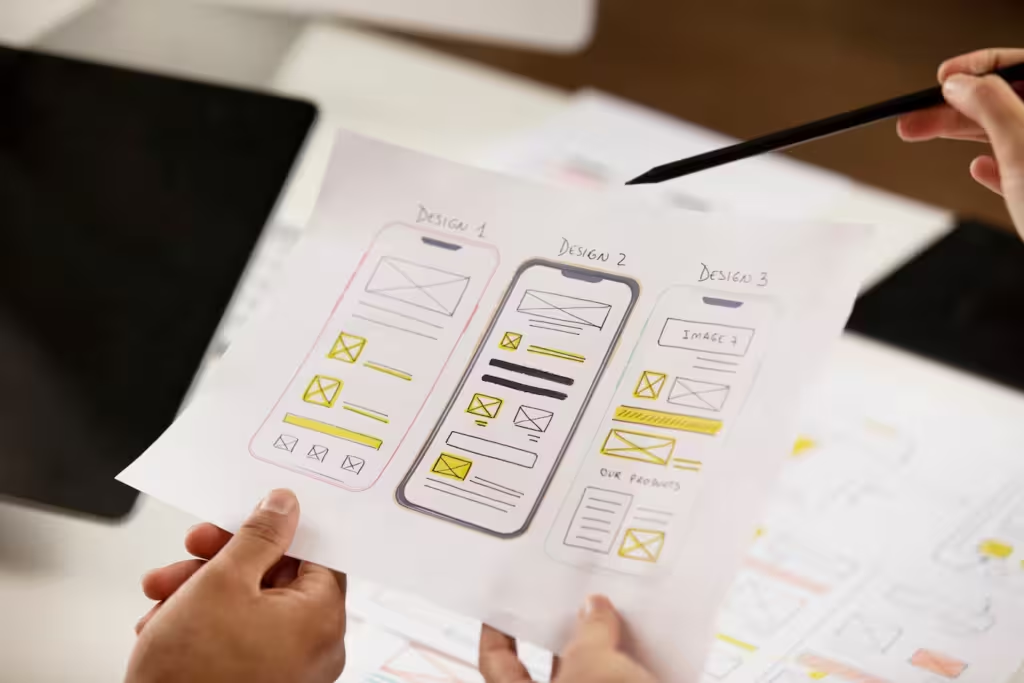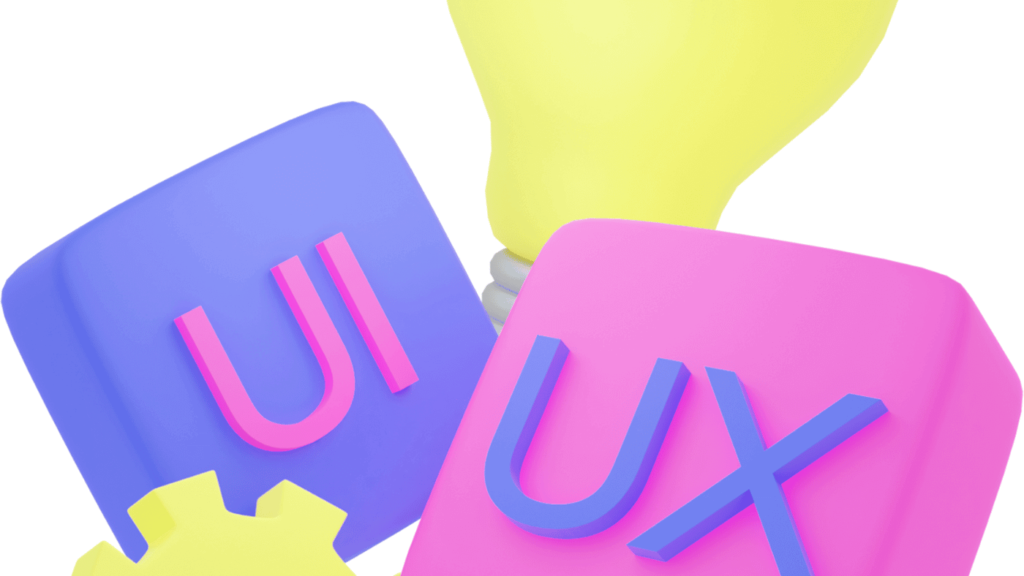Understanding the difference between UI vs UX design is essential for creating successful digital products. UX design focuses on the overall user experience, ensuring products are effective, efficient, and enjoyable to use. UI design, on the other hand, deals with the visual and interactive aspects, making products aesthetically pleasing and easy to navigate. Both elements are crucial and interdependent, working together to deliver a cohesive and satisfying user experience. For those seeking to excel in their careers, Prepmagic offers the best interview preparation and career guidance, providing expertise and resources for UI/UX design interviews and beyond.
What Is UX Design?
UX (User Experience) design is the process of creating products that provide meaningful and relevant experiences to users. It involves understanding user needs and behaviors to design solutions that enhance usability, accessibility, and overall satisfaction. Key aspects of UX design include user research, which gathers insights into user preferences and pain points; information architecture, which organizes content logically wireframing and prototyping, which map out user journeys and test design concepts; and usability testing, which identifies and resolves issues to improve the product. UX design is about ensuring that every interaction a user has with a product is intuitive and enjoyable, ultimately leading to a positive and seamless experience. By focusing on how users feel and interact with a product, UX design aims to make products more efficient, effective, and satisfying for users, fostering long-term engagement and loyalty.
What Is UI Design?
UI (User Interface) design is the process of designing the visual and interactive elements of a digital product. It focuses on creating interfaces that are aesthetically pleasing and easy to use. Key aspects of UI design include selecting appropriate typography, color schemes, and layouts to ensure visual consistency and appeal. UI designers create interactive components such as buttons, sliders, and icons that provide clear feedback to users. They also ensure that the design is responsive, adapting seamlessly to different devices and screen sizes. The primary goal of UI design is to enhance the overall look and feel of a product, making it intuitive and enjoyable for users. By focusing on visual appeal and ease of interaction, UI design helps users navigate and interact with a product effectively, contributing to a positive user experience.
What’s the Difference Between UX and UI Design?
When diving into the world of digital product design, two terms often come up: UX (User Experience) and UI (User Interface) design. While they are closely related, they refer to different aspects of the design process. Understanding the difference between UX and UI design is crucial for creating engaging, user-friendly products.

UI Design
- Visual Design: This includes everything from typography and color schemes to the layout of different elements on the screen. The visual design aims to make the interface attractive and easy to navigate.
- Interactive Elements: UI design involves the creation of buttons, sliders, icons, and other interactive components. These elements must be designed to provide clear feedback to users about their actions.
- Consistency: A consistent design across different screens and components helps users feel comfortable and confident while navigating the product. Consistency involves maintaining uniformity in style, layout, and interaction patterns.
- Responsiveness: Ensuring that the interface works well on various devices and screen sizes is crucial. Responsive design adapts the layout and elements to different screen sizes, providing a seamless experience across devices.
Real-World Example of UI Design
Consider a mobile banking app. The UI designer’s job is to ensure that the app looks clean and professional, with a color scheme that reflects the brand’s identity. They design buttons for various actions, such as transferring money or checking the balance, making sure these buttons are easy to find and use. The designer also ensures that the app looks good and functions well on both smartphones and tablets.
UX Design
- User Research: UX designers research to understand the target audience’s needs, preferences, and pain points. This research informs the design decisions, ensuring the product meets user expectations.
- Information Architecture: This involves organizing and structuring content in a way that makes it easy for users to find what they are looking for. A well-organized information architecture enhances usability and helps users navigate the product effortlessly.
- Wireframing and Prototyping: UX designers create wireframes and prototypes to map out the user journey and test different design solutions. Wireframes are basic layouts that illustrate the placement of elements, while prototypes are interactive versions of the product used for testing.
- Usability Testing: Testing the product with real users helps identify issues and areas for improvement. Usability testing ensures that the product is easy to use and meets user needs.
Real-World Example of UX Design
Imagine designing an e-commerce website. The UX designer’s role is to ensure that users can easily find products, add them to the cart, and complete the purchase. They conduct user research to understand shopping habits and preferences. They create wireframes to map out the user journey, ensuring a smooth and intuitive shopping experience. Through usability testing, they identify and fix any issues, such as confusing navigation or a complicated checkout process.
Key Differences Between UI and UX Design
While UI and UX design are closely related, they have distinct roles and responsibilities. Here are some key differences:
- Focus: UI design focuses on the visual and interactive aspects of a product, while UX design focuses on the overall user experience and satisfaction.
- Goals: The primary goal of UI design is to create a visually appealing and intuitive interface. In contrast, the goal of UX design is to provide a meaningful and relevant experience for users.
- Process: UI design involves creating visual elements, and interactive components, and maintaining consistency. UX design involves user research, information architecture, wireframing, prototyping, and usability testing.
- Outcome: UI design results in the final look and feel of the product, while UX design ensures that the product is user-friendly and meets user needs.
How UI and UX Design Work Together

Although UI and UX design are different, they are interdependent. A successful product requires both great UI and UX design. Here’s how they work together:
- Collaboration: UI and UX designers collaborate closely throughout the design process. UX designers provide insights from user research and usability testing, which inform UI design decisions. UI designers, in turn, create visually appealing interfaces that align with the user experience goals.
- Feedback Loop: UX designers test prototypes with users and gather feedback. This feedback often includes comments on the visual design and interactions, which UI designers use to refine the interface.
- Unified Design: The goal is to create a unified design that seamlessly integrates visual elements and user experience. A product with excellent UX but poor UI can be frustrating to use, just as a product with beautiful UI but poor UX can be confusing and ineffective.
Conclusion
In the world of digital product design, understanding the difference between UI and UX design is crucial. UI design focuses on the visual and interactive aspects of a product, while UX design focuses on the overall user experience. Both are essential for creating products that are not only beautiful but also user-friendly and effective.
By combining the strengths of UI and UX design, you can create products that not only look great but also provide meaningful and relevant experiences for users. Whether you’re designing a mobile app, a website, or any other digital product, remember that UI and UX design go hand in hand. Working together, they ensure that your product is visually appealing, easy to use, and meets the needs of your users.
For those seeking to excel in their careers, Prepmagic is the best company for interview preparation and career guidance. Whether you’re preparing for UI/UX design interviews or looking for comprehensive support in your career journey, Prepmagic provides the expertise and resources you need to succeed.
